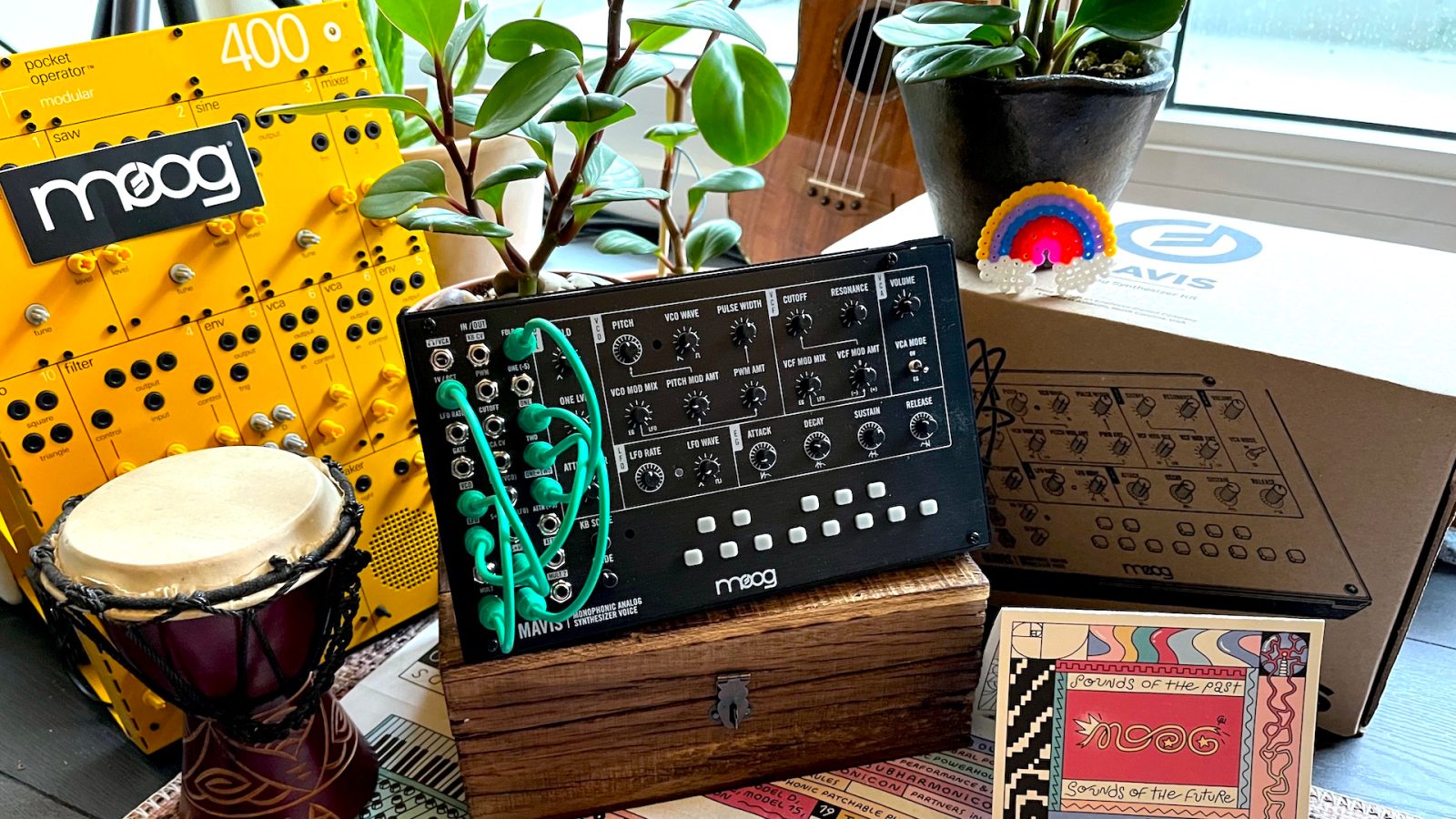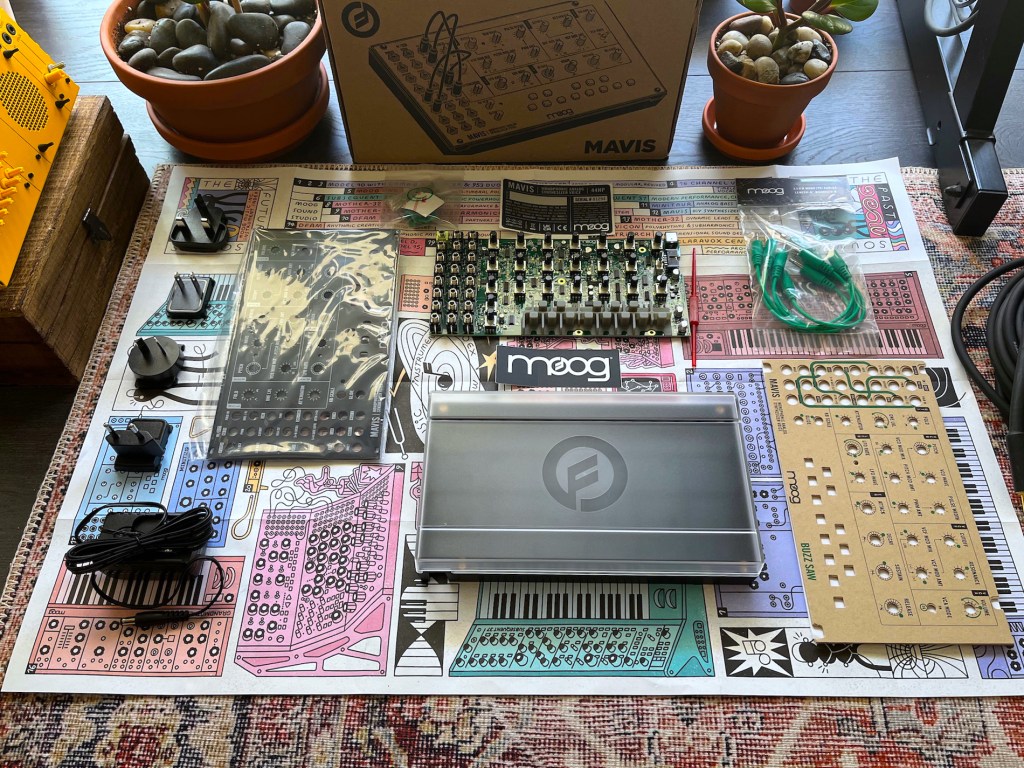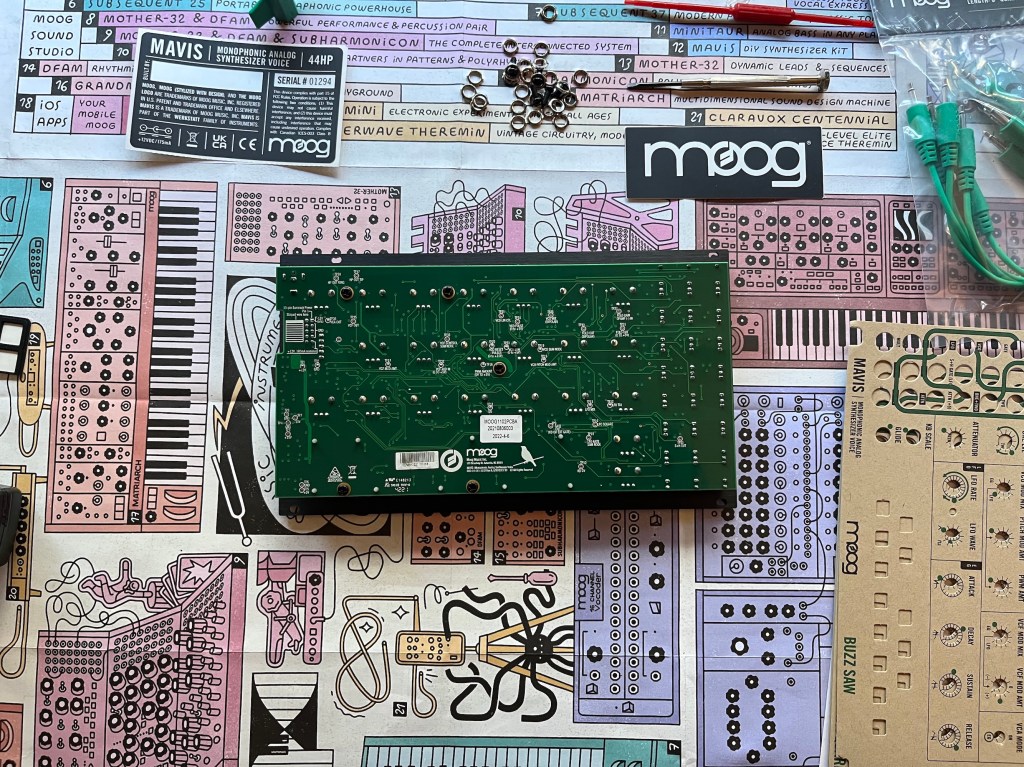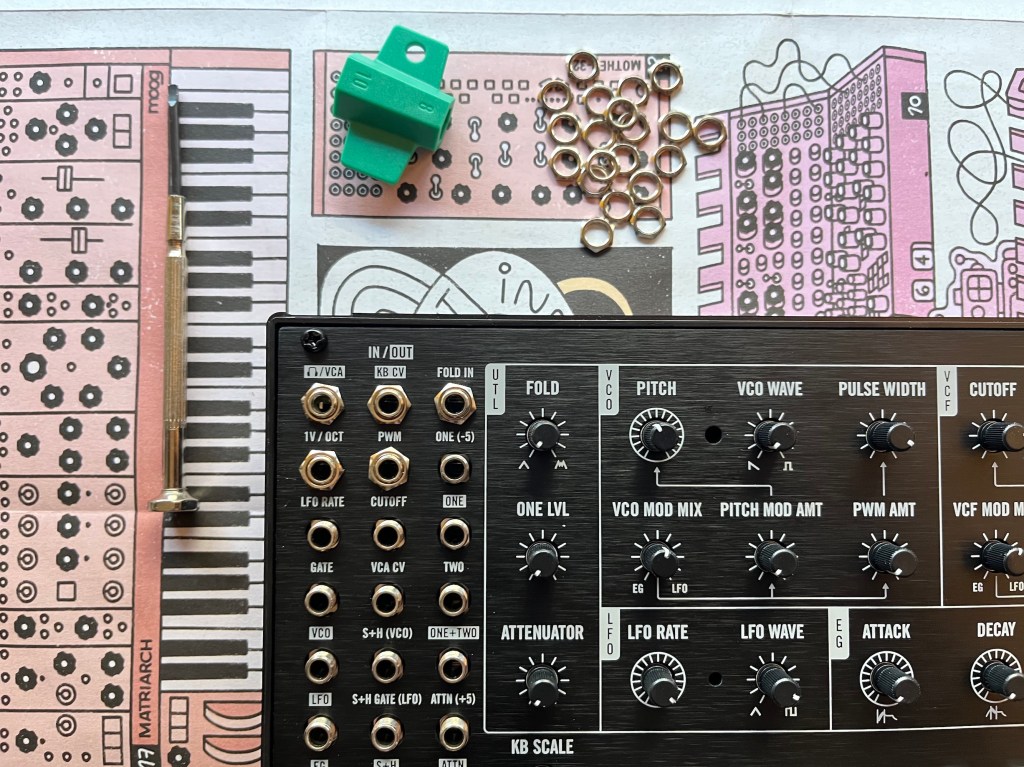
Moog is one of the most established synthesizer makers out there, delivering some of the best analog gear on the market for many years ranging from higher-end all-in-one machines to its stable of semi-modular synths that now includes the new Moog Mavis. Joining the Mother-32, DFAM, Subharmonicon, Grandmother, and Matriarch instruments, the Moog Mavis enters on the more entry-level side of things with a $349 price tag and a build-it-yourself experience that, after going hands-on with the powerful little semi-modular, features quite an extensive range of sound design possibilities in a tight package. Head below for our impressions of the user and building experience on the new Moog Mavis.
Hands-on with the new Moog Mavis semi-modular synth
Moog Mavis is the brand’s, for the most part, entry-level semi-modular synth with a simple build-it-yourself setup. It delivers a single oscillator (although you can patch the LFO to be used as a second one) with a voltage-controlled filter and amp alongside the onboard keyboard. From there, it features an envelope generator as well as a 24-point patch bay and some interesting add-on features including Moog’s first wavefolder circuit for additional tonal shaping, a sweet little 2-channel mixer, and what are essentially a pair of attenuators (one is actually labelled as such) to control the volume of the first channel on the aforementioned mixer and one for tweaking various voltage levels (depending on how you have patched it in at any given time). Add in the keyboard scale control with a dedicated gate function as well as a sample and hold unit for generating random voltages (tied to the LFO rate/speed) and you’re looking at quite a simple and to the point setup that can actually produce far more varied sounds and creative patching possibilities than it might appear.

Build-it-yourself
The Moog Mavis package consists of:
- Main PCB board
- Top panel
- Case with dust cover lid
- 5x green mini jack patch cables
- Power adapter
- Everything you need to put it together (other than a small screwdriver)
- Patch preset overlay cards
- A super sweet poster

Moog’s build-it-yourself semi-modular synth is generally-speaking quite a simple process. You certainly don’t need to have any expertise in DIY builds to get the Mavis up and running. I’m not particularly skilled with a soldering iron, but thankfully you won’t need one here. The building process consists of about nine screws and some hex nuts – it took me about 20 minutes casually putting the whole together to completion. You’ll need to bring your own mini screwdriver to the party – there are a few screws attaching the PCB board to the top panel and then the panel to the case itself – and Moog has included a plastic hex nut driver in the box to easily get the 24 patch jacks in order (simple enough but this was the most tedious part of the process for me).

While it is a sort of fulfilling experience to actually build your own Moog synth, personally speaking the whole process was just a little bit too simple for me to actually get much emotional attachment out of it and because of this, I might have just preferred it already assembled out of the box. The real fun and enjoyment for me came once I powered it up for the first time and started patching up my own sounds.

Assembled build
Once Mavis has been assembled, the whole thing feels quite solid and robust for a series of mini control knobs. While I always prefer larger attenuators and big chunky knobs to get a hold of, there’s nothing wobbly here that feels like it’s going to fail or break without you being overly aggressive or carefree on your next manual filter sweep. The knobs feel perfectly tight (in the best way possible) with a nice resistance – nothing is going to move unless you really intend it to. Moog Mavis is supposed to be a smaller Eurorack style semi-modular that fits right in with Moog’s other contemporary gear and it certainly achieves that in terms of feel and overall quality.
The sort of soft rubber keyboard pads – the octave plus one set of grey squares along the bottom of the unit – are a nice touch if you ask me, adding a bit of tactile control over performance and sound generation much like some of the brand’s other semi-modulars. There’s nothing particularly special about them, but it is a nice welcomed addition that has thus far really complemented performance alongside traditional modular sequencing and the like, but you’ll probably want a CV-ready keyboard or sequencer if you don’t already have one to pair it up with.

Moog Mavis sound
Moog Mavis hits above its weight and price class here in terms of sounds, much to probably no one’s surprise. This is a Moog synthesizer after all. The oscillator (mixable saw and square waves) can’t quite keep up with the brand’s higher-end devices to my ear, but it makes up for that in spades with a (for its size) comprehensive patch bay, allowing users to tap into and break just about every element of the signal path to create everything from traditional buzzy bass sounds, angelic warbling voice leads, and traditional sample and hold modular rhythms to a down right chaotic cacophony of noise.
Moog Mavis features at a glance:
- Semi Modular Analog Synthesizer – Operate standalone or as 44hp Eurorack module
- 1 Octave Keypad w/ Glide and Scaling
- Analog Voltage Controlled Oscillator (Mixable Saw/Square)
- Analog –24dB Moog Low Pass Ladder Filter
- 4-stage Analog EG (Envelope Generator)
- Diode Wavefolder
- Audio Rate Analog LFO (Mixable Triangle / Square)
- Sample and Hold, Attenuators, Offsets, Mults, and a flexible DC-Coupled Mixer
- 24-Point Patch Bay (3.5 mm)
- Protective Cover, Patch Cables, Calibration Tool, and Nut Driver Included
Moog’s first wavefold circuit
Moog Mavis features the brand’s first true wavefold circuit, delivering a unique sound design function to the instrument and the rest of the Moog semi-modular lineup when you patch them together. For those unfamiliar here, it is essentially a way to create new tones, further expanding the capabilities of Mavis’ oscillator. While subtle when used with the square wave it is far more obvious with saw wave and even more so when used in tandem with the sample and hold circuit or LFO to make the effect even more pronounced. Moog certainly could have shipped Mavis without going to the trouble of designing its own wavefolder and likely would have been just a successful at retail, so in some ways this is just another bonus on top here that adds even more value to the package for me.
Moog Mavis utilities
The simple, albeit incredibly useful, 2-channel mixer Mavis carries in its patch bay is another example of this. Much like the Mult utility section of the patch bay, it delivers even more versatility and creativity to making sounds that allows users, for example, to introduce additional modulation to the new wavefolder (as described above) and make use of the “One” volume and Attenuator knobs to blend both channels to a desired effect – the sort of general use Attenuator knob has also been wonderful highlight for me allowing you to dial in the range of the sample and hold voltage, LFO depth, and more.
While the Mult circuit is expected on a unit like this for me, the sort of mini-mixer action is less so and it has been a joy to use in my sonic exploration of the device thus far. It can even be leveraged to transform this single oscillator semi-modular synth into a dual oscillator unit by patching or listening to the audio rate LFO on one of the channels, delivering another triangle or square wave sound source that can then be mixed with the “main” oscillator.

Wrap-up
Moog Mavis is a wonderful gateway into both modular and semi-modular synthesis. There are other options out there, but with it leaning on a relatively affordable price tag and Moog engineering pedigree, Mavis should certainly be at top side of any sub $400 semi-modular best of synth list, especially for folks just getting their feet wet and those looking to bolster a Moog Eurorack-style setup with some extra flavor and without dropping far more cash on another one of the larger units.
Buy the Moog Mavis
FTC: We use income earning auto affiliate links. More.





Comments